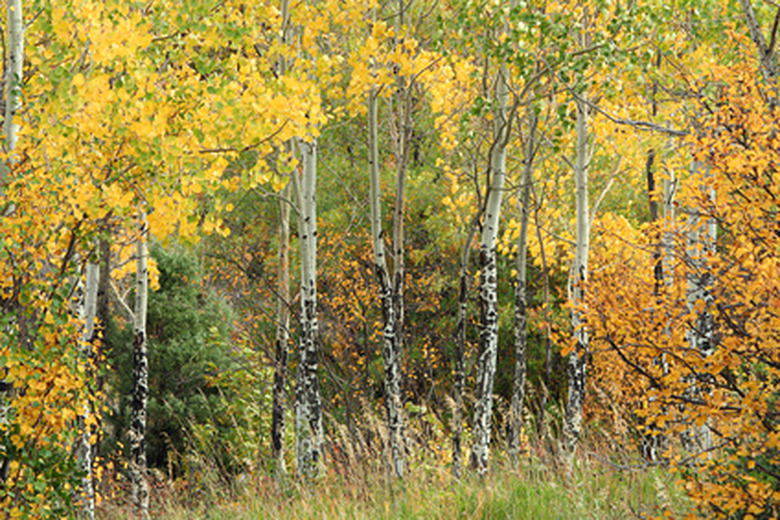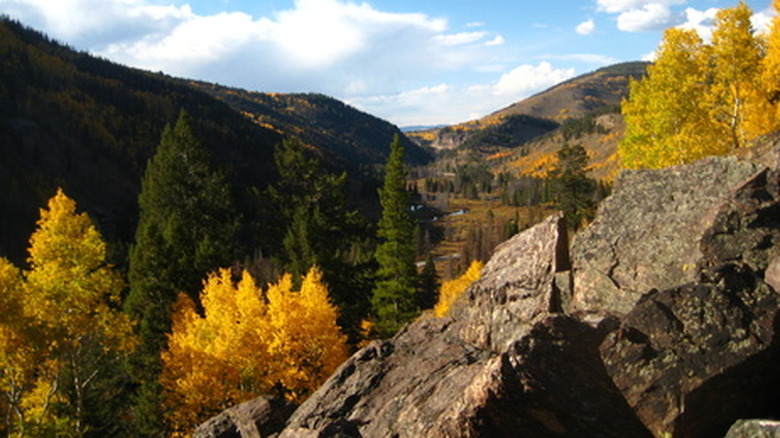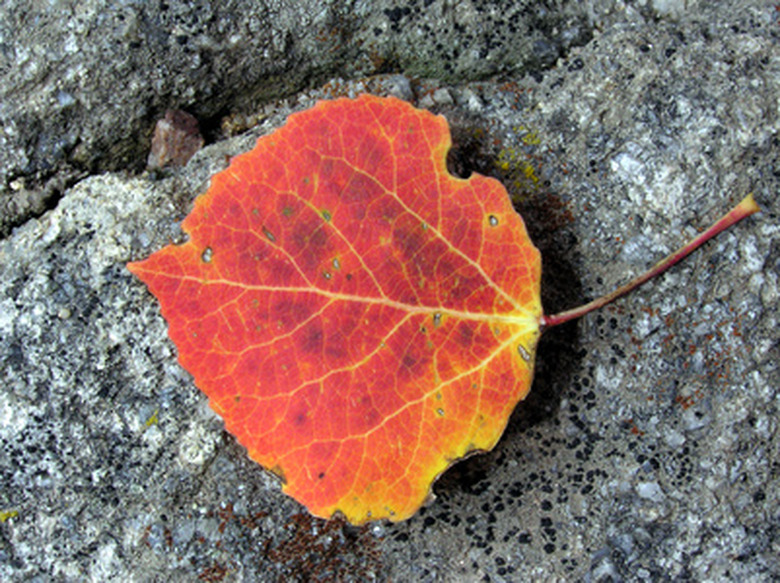Differences Between Aspen Tree & Quaking Aspen Tree
Six species of aspen exist worldwide–all belonging to the scientific genus Populus. Quaking aspen and bigtooth aspen have white bark and brilliant fall color; both provide food for black bear, deer, porcupine, beaver, elk and moose. Native Americans used both of these trees as food, grinding the dried inner bark into meal for bread or mush. Yet Populus tremuloides and Populus grandidentata are different trees with different characteristics.
Distribution
According to the Unites States Department of Agriculture, quaking aspen is the most widely distributed tree on the continent, its growth range extending from Alaska to eastern Canada and south to Mexico. Minnesota, Wisconsin, Michigan, Colorado and Alaska each have at least 2 million acres of quaking aspen forest. On the other hand, bigtooth aspen is found largely in the northeastern United States and southeastern Canada.
Disease Resistance
Quaking aspen has thin soft bark. This makes it readily susceptible to disease as well as infestations of insects, most notably the poplar borer beetle and forest tent caterpillar. Because bigtooth aspen has harder bark that grows thicker as it ages, it is more disease-resistant than quaking aspen. However, bigtooth aspen does suffer from Hypoxylon canker, and fungi and root decay can also attack the species.
Physical Descriptions
Both bigtooth and quaking aspen are deciduous trees with straight trunks and gently ascending branches. Bigtooth aspen can be distinguished from quaking aspen by its leaves; they are bigger and marked with large, irregular teeth on the leaf margins. Bigtooth aspen can reach heights of 60 to 80 feet, while the quaking aspen is typically closer to 50 feet. Even the root systems differ; bigtooth aspen roots are shallow and spreading, while quaking aspen roots can extend downward over 10 feet.


